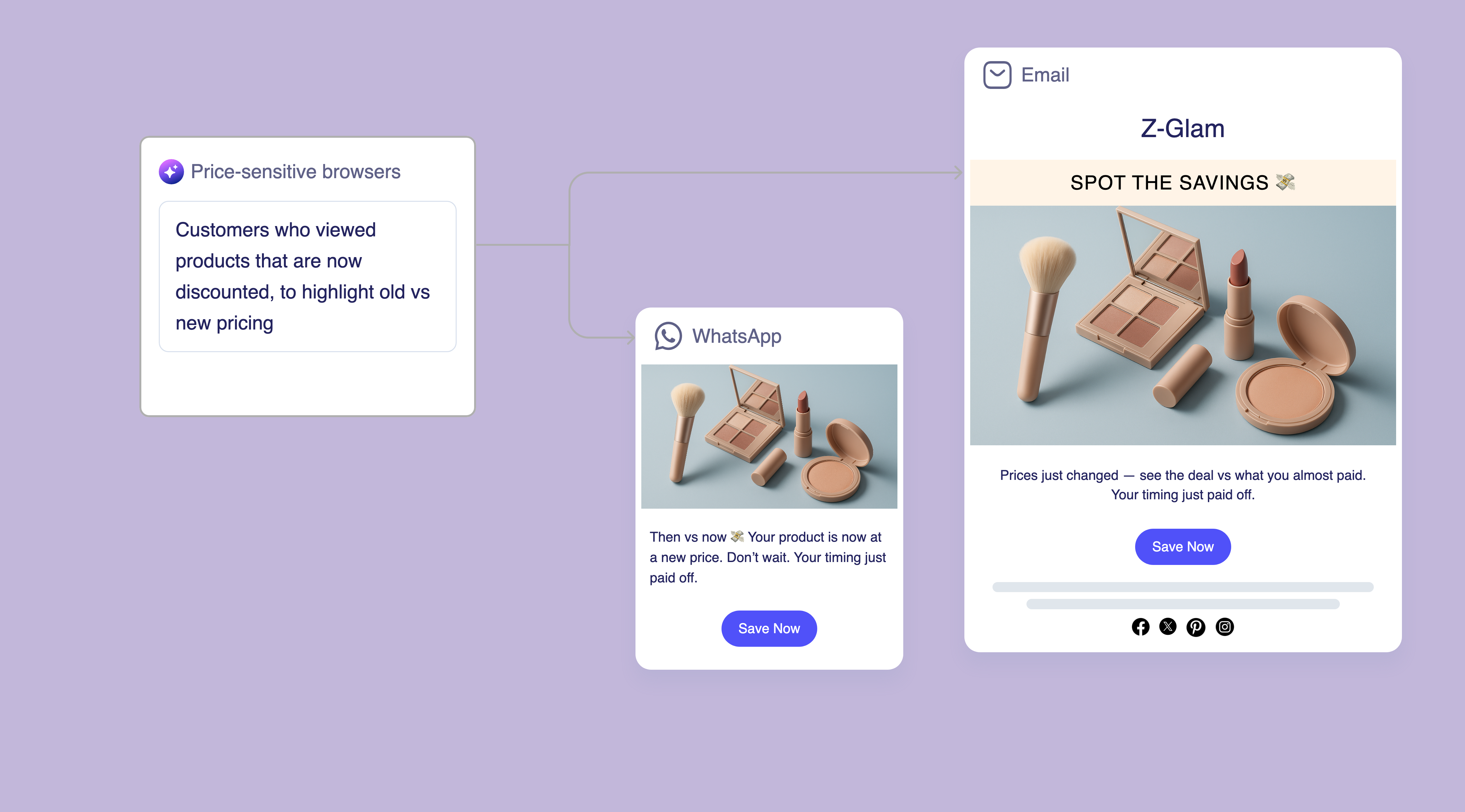
Before vs After Price Campaigns
Showcase clear savings by highlighting the original price against the discounted one to convert price-sensitive shoppers.

What are Before vs After Price campaigns?
Before vs After Price campaigns target price-sensitive browsers who viewed products before promotion or price drops by sending comparison-style messages showing old vs. new prices to drive action. This conversion strategy uses price anchoring psychology to make current prices appear more attractive, motivating immediate purchase decisions through clear value demonstration.
Why Before vs After Price Matters

Challenges

Opportunities
Outcomes
Higher Conversion from Price-Conscious Users
Increased Promotional Campaign Effectiveness
Improved trust and transparency with shoppers
Who is it for?
Audience
Exclusions
How it Plays Out
A sample sequence for this use case.
It was $99... now it's $69! Same product. Better deal. Last week: $99. Today: $69. You know what to do → [Link]
Act before it ends → [CTA]
Price comparison reminder: Was $99, now $69 - don't miss this value → [Shop Now]
Final hours: $30 savings end soon → [Last Chance]
Best Practices
- Display clear numerical differences ($99 → $69) rather than percentage discounts to make savings feel more tangible.
- Time campaigns immediately after price drops to capture maximum impact while deals are fresh and inventory is available.
- Focus on products customers previously viewed to ensure personal relevance and demonstrated interest.
Before vs After Price Campaigns Examples & Prompts
Channel Examples
Automate with Zenie Prompts
Tracking price changes and matching them with previous viewers requires sophisticated pricing history and customer behavior analysis. With Zenie, you can automatically identify price-sensitive opportunities and create compelling comparison campaigns right within ZEPIC almost instantly.
Explore Similar eCommerce Marketing Strategies
FAQs
Why are before vs after price campaigns effective for eCommerce conversion?
Before vs after price campaigns work because they provide concrete proof of value through clear numerical comparisons. D2C marketers see higher conversion rates when customers can easily visualize the savings amount rather than calculating discounts themselves.
How should eCommerce brands present price comparisons for maximum impact?
D2C businesses should show actual currency amounts ($99 → $69) rather than percentages, use strikethrough formatting for old prices, and highlight the savings amount prominently. Visual contrast makes the deal feel more significant to price-sensitive customers.
What timing works best for before vs after price comparison campaigns?
Launch comparison campaigns immediately after price drops or promotional pricing goes live to maximize urgency and inventory availability. Send reminders as promotional periods near expiration to create final urgency.
Should before vs after campaigns target all previous viewers or specific segments?
Prioritize customers who viewed products multiple times, spent significant time on product pages, or showed other price-comparison behaviors. These users are most likely to appreciate and act on clear value demonstrations.
How do eCommerce businesses measure before vs after price campaign success?
Track conversion rates from price comparison campaigns, revenue generated during promotional periods, and customer acquisition costs for deal-driven purchases. Monitor whether comparison campaign buyers become regular customers or remain exclusively deal-focused shoppers.


